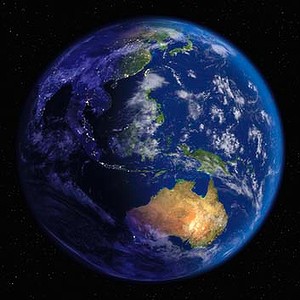Earthquake swarm under Cumbre Vieja volcano, Canary IslandsPosted by TW on February 16, 2018
 A new seismic swarm started under Cumbre Vieja volcano (La Palma), the Canary Islands on February 10, 2018. Quakes in this latest swarm are stronger than those in the previous swarm in October 2017, the first swarm in this area in 30 years.
A new seismic swarm started under Cumbre Vieja volcano (La Palma), the Canary Islands on February 10, 2018. Quakes in this latest swarm are stronger than those in the previous swarm in October 2017, the first swarm in this area in 30 years.National Geographic Institute (IGN) registered a total of 83 earthquakes between 23:23 UTC, February 10 and 07:32 UTC, February 15 with magnitudes ranging from 1.6 to 2.6.
In addition, there have been several hundred more which weren't detected due to their magnitude and depth.

Cumbre Vieja earthquake swarm February 10 - 15, 2018. Credit: IGN
The depth of the quakes decreased during the course of the swarm, suggesting an upward movement of magma towards the surface.
The Canary Government called for an urgent meeting of the Scientific Committee for Evaluation and Monitoring of Volcanic Phenomena to discuss why the quakes are happening again and what might happen in the future. This is the second such meeting in four months.
INVOLCAN said that this new series is something expected based on geochemical measurements made in the Cumbre Vieja volcano.

La Palma, Canary Islands. Credit: CEDIDA
Geological summary
The 47-km-long (29 miles) wedge-shaped island of La Palma, the NW-most of the Canary Islands, is composed of two large volcanic centers. The older northern one is cut by the massive steep-walled Caldera Taburiente, one of several massive collapse scarps produced by edifice failure to the SW.
The younger Cumbre Vieja, the southern volcano, is one of the most active in the Canaries. The elongated volcano dates back to about 125 000 years ago and is oriented N-S. Eruptions during the past 7 000 years have originated from the abundant cinder cones and craters along the axis of Cumbre Vieja, producing fissure-fed lava flows that descend steeply to the sea.
Historical eruptions at La Palma, recorded since the 15
th century, have produced mild explosive activity and lava flows that damaged populated areas. The southern tip of the island is mantled by a broad lava field produced during the 1677-1678 eruption. Lava flows also reached the sea in 1585, 1646, 1712, 1949, and 1971. (GVP)
Featured image: Earthquake swarm under Cumbre Vieja volcano, La Palma, Canary Islands - February 2018. Credit: IGNThanks to: https://watchers.news

 BREAKING - 7.3 EARTHQUAKE IN SAN JUAN, MEXICO - Swarms of quakes setting new records! | Fri Feb 16, 2018 5:36 pm
BREAKING - 7.3 EARTHQUAKE IN SAN JUAN, MEXICO - Swarms of quakes setting new records! | Fri Feb 16, 2018 5:36 pm
 Re: BREAKING - 7.3 EARTHQUAKE IN SAN JUAN, MEXICO - Swarms of quakes setting new records! | Fri Feb 16, 2018 8:09 pm
Re: BREAKING - 7.3 EARTHQUAKE IN SAN JUAN, MEXICO - Swarms of quakes setting new records! | Fri Feb 16, 2018 8:09 pm Re: BREAKING - 7.3 EARTHQUAKE IN SAN JUAN, MEXICO - Swarms of quakes setting new records! | Fri Feb 16, 2018 8:11 pm
Re: BREAKING - 7.3 EARTHQUAKE IN SAN JUAN, MEXICO - Swarms of quakes setting new records! | Fri Feb 16, 2018 8:11 pm Re: BREAKING - 7.3 EARTHQUAKE IN SAN JUAN, MEXICO - Swarms of quakes setting new records! | Fri Feb 16, 2018 8:45 pm
Re: BREAKING - 7.3 EARTHQUAKE IN SAN JUAN, MEXICO - Swarms of quakes setting new records! | Fri Feb 16, 2018 8:45 pm


 Re: BREAKING - 7.3 EARTHQUAKE IN SAN JUAN, MEXICO - Swarms of quakes setting new records! | Fri Feb 16, 2018 8:46 pm
Re: BREAKING - 7.3 EARTHQUAKE IN SAN JUAN, MEXICO - Swarms of quakes setting new records! | Fri Feb 16, 2018 8:46 pm

